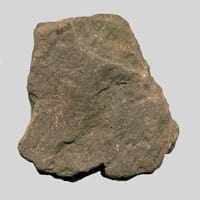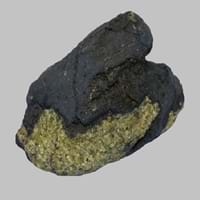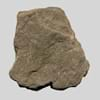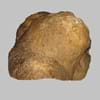Definition
Shale is a fine-grained sedimentary rock which is formed by the compaction of silt and clay-size mineral particles
Basanite is a black basaltic rock which mainly contains plagioclase, augite, olivine and nepheline and is formerly used as a touchstone
Discoverer
Unknown
Unknown
Etymology
From German Schalstein laminated limestone, and Schalgebirge layer of stone in stratified rock. From Old English scealu in its base sense of- thing that divides or separate,
From Latin basanites + -ite
Class
Sedimentary Rocks
Igneous Rocks
Sub-Class
Durable Rock, Medium Hardness Rock
Durable Rock, Hard Rock
Group
Not Applicable
Not Applicable
Other Categories
Fine Grained Rock, Opaque Rock
Fine Grained Rock, Opaque Rock
Texture
Clastic, Splintery
Aphanitic to Porphyritic
Color
Black, Brown, Buff, Green, Grey, Red, Yellow
Black, Brown, Green, Grey, Red, White
Durability
Durable
Durable
Appearance
Muddy
Glassy or Pearly
Interior Uses
Decorative Aggregates, Homes, Interior Decoration
Decorative Aggregates, Homes
Exterior Uses
As Building Stone, As Facing Stone, Office Buildings
As Building Stone, Garden Decoration, Office Buildings
Other Architectural Uses
Curbing
Whetstones
Construction Industry
Cement Manufacture, Construction Aggregate, for Road Aggregate, Making natural cement, Raw material for the manufacture of mortar
Arrowheads, Construction Aggregate, Cutting Tool, Spear Points
Medical Industry
Not Yet Used
Not Yet Used
Antiquity Uses
Artifacts, Sculpture
Artifacts, Monuments
Commercial Uses
Creating Artwork, Pottery
As a touchstone, Creating Artwork, Gemstone, In fire-starting tools, Manufacture of tools, Metallurgical Flux, Jewelry, To ignite fire, Used in flintlock firearms
Types
Red Shale, Black Shale, Green Shale, Grey Shale and Yellow Shale
Nepheline-Basanite, Analcite-Basanite and Leucite-Basanite
Features
Easily splits into thin plates, Generally rough to touch, Very fine grained rock
Clasts are smooth to touch, Easily splits into thin plates, Has High structural resistance against erosion and climate, Used as a touchstone
Archaeological Significance
Famous Monuments
Jantar Mantar in India
Data Not Available
Sculpture
Used
Not Yet Used
Famous Sculptures
Data Not Available
Not Applicable
Pictographs
Used
Not Used
Petroglyphs
Used
Not Used
Figurines
Used
Not Yet Used
Formation
Shale forms when very fine-grained clay particles are deposited in water which settle at the bottom of water bodies. They are later compacted hence forming shale.
Basanite is a fine-grained, hard rock that forms when bits of lava shoot out of volcanoes.
Mineral Content
Albite, Biotite, Calcite, Chert, Chlorite, Dolomite, Hematite, Micas, Muscovite or Illite, Pyrite, Quartz, Silica, Sulfides
Augite, Feldspar, Ilmenite, Olivine, Plagioclase
Compound Content
Ca, Fe, Mg, Silicon Dioxide, Sodium
Potassium Oxide, Sodium Oxide, Silicon Dioxide
Types of Metamorphism
Not Applicable
Burial Metamorphism, Cataclastic Metamorphism, Contact Metamorphism, Regional Metamorphism
Types of Weathering
Biological Weathering, Chemical Weathering, Mechanical Weathering
Chemical Weathering, Mechanical Weathering
Types of Erosion
Chemical Erosion, Coastal Erosion, Glacier Erosion
Chemical Erosion, Coastal Erosion, Glacier Erosion, Sea Erosion, Water Erosion, Wind Erosion
Grain Size
Very fine-grained
Fine Grained
Fracture
Not Available
Uneven, Splintery or Conchoidal
Porosity
Highly Porous
Highly Porous
Luster
Dull
Waxy and Dull
Compressive Strength
Not Available
Cleavage
Slaty
Non-Existent
Specific Gravity
2.2-2.8
2.5-2.8
Transparency
Opaque
Translucent to Opaque
Density
2.4-2.8 g/cm3
2.7 g/cm3
Resistance
Heat Resistant, Impact Resistant
Heat Resistant, Impact Resistant, Pressure Resistant, Wear Resistant
Deposits in Eastern Continents
Asia
Bangladesh, China, India, Russia
Not Yet Found
Africa
Ethiopia, Kenya, Morocco, South Africa, Tanzania
Uganda
Europe
Austria, France, Germany, Greece, Italy, Romania, Scotland, Spain, Switzerland
Germany, Hungary, Italy, Spain
Others
Not Yet Found
Greenland, Mid-Atlantic Ridge
Deposits in Western Continents
South America
Bolivia, Chile, Colombia, Ecuador, Peru, Venezuela
Bolivia, Brazil
Deposits in Oceania Continent
Australia
New South Wales, New Zealand, Queensland, Victoria, Western Australia
New South Wales, New Zealand, Queensland, South Australia, Western Australia
All about Shale and Basanite Properties
Know all about Shale and Basanite properties here. All properties of rocks are important as they define the type of rock and its application. Shale belongs to Sedimentary Rocks while Basanite belongs to Igneous Rocks.Texture of Shale is Clastic, Splintery whereas that of Basanite is Aphanitic to Porphyritic. Shale appears Muddy and Basanite appears Glassy or Pearly. The luster of Shale is dull while that of Basanite is waxy and dull. Shale is available in black, brown, buff, green, grey, red, yellow colors whereas Basanite is available in black, brown, green, grey, red, white colors. The commercial uses of Shale are creating artwork, pottery and that of Basanite are as a touchstone, creating artwork, gemstone, in fire-starting tools, manufacture of tools, metallurgical flux, jewelry, to ignite fire, used in flintlock firearms.










